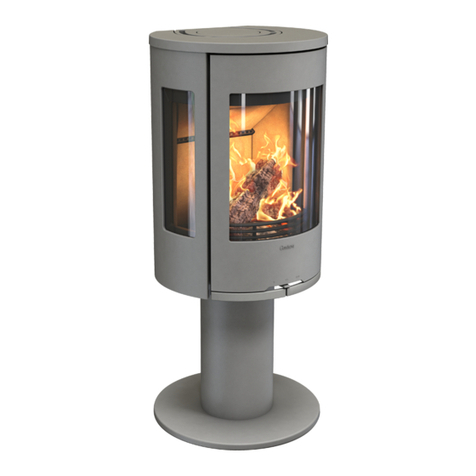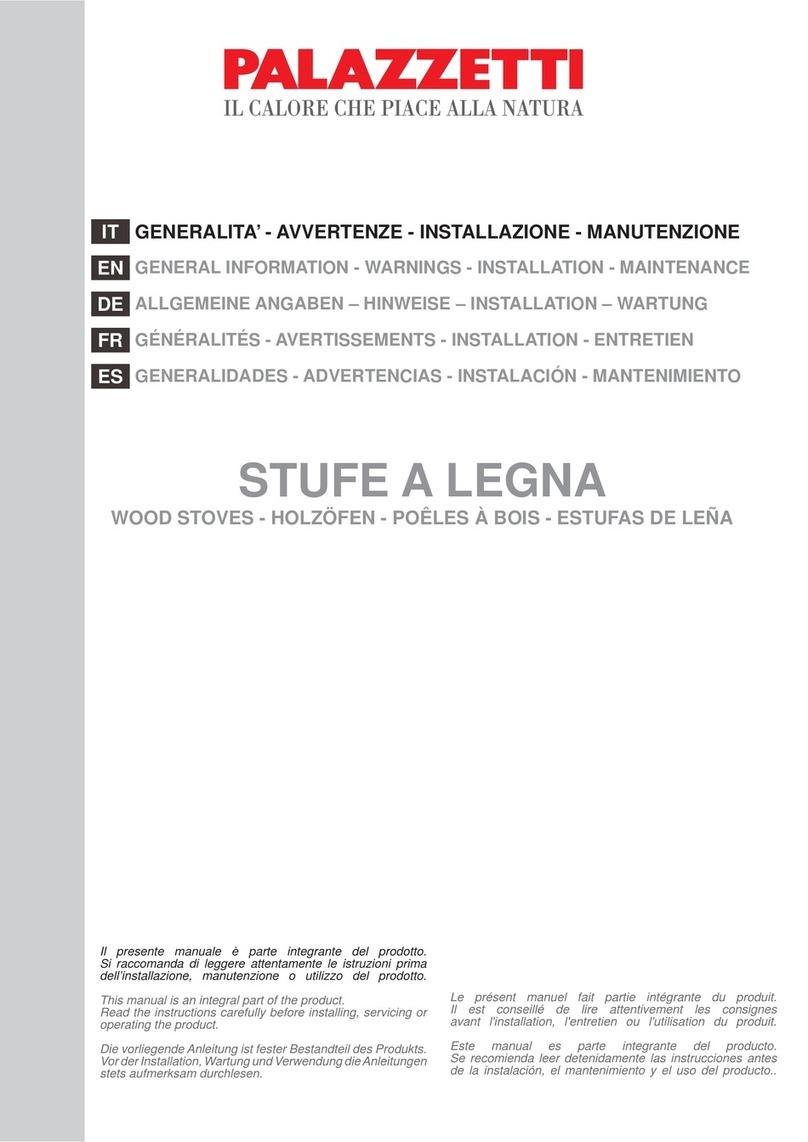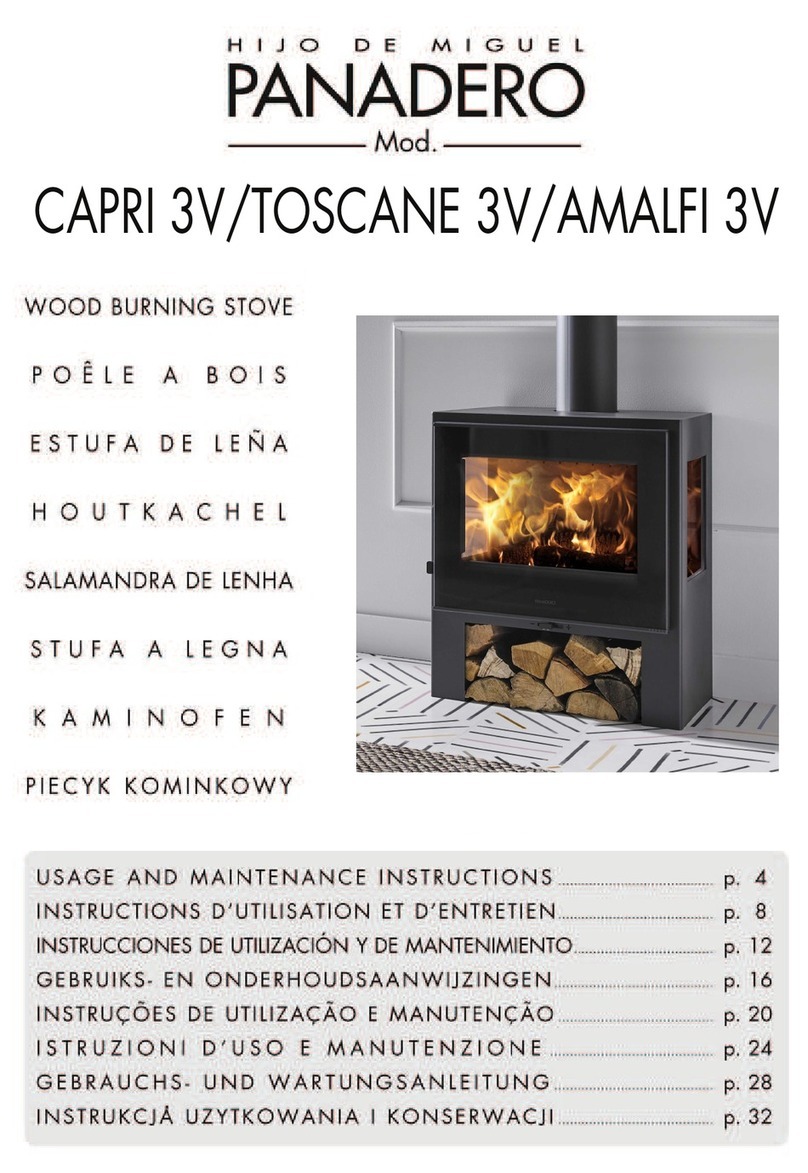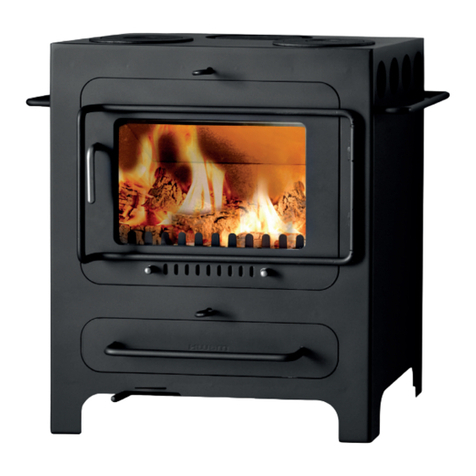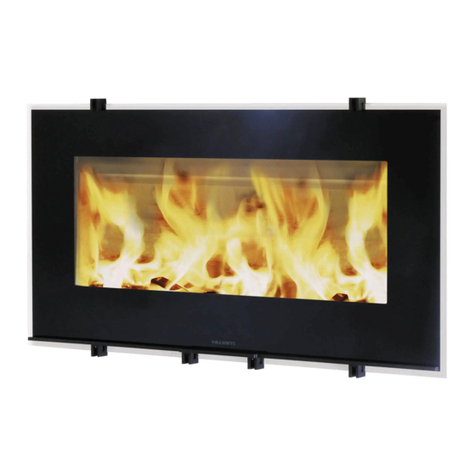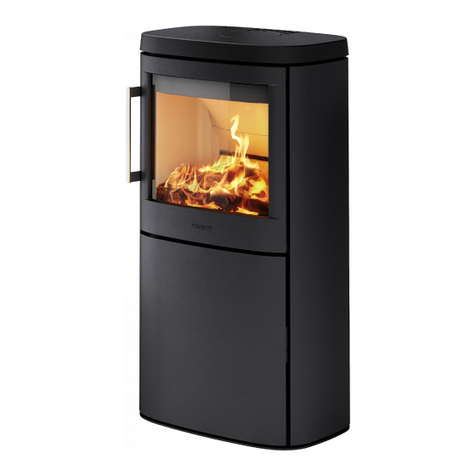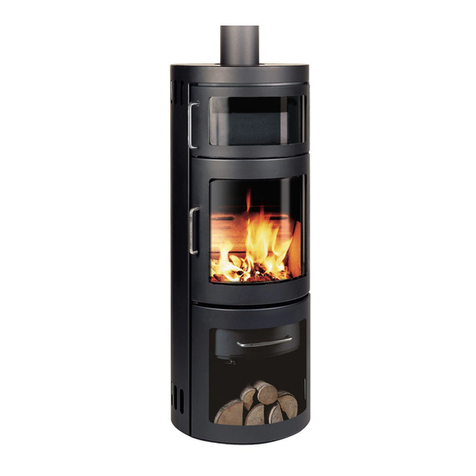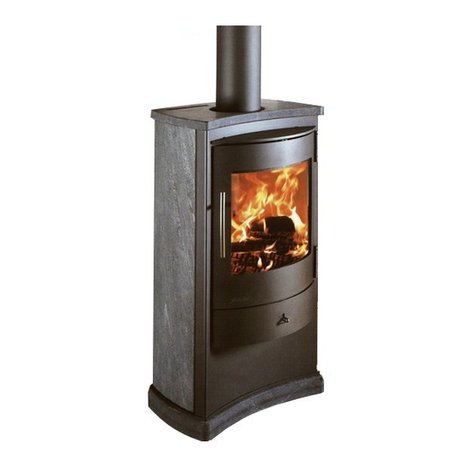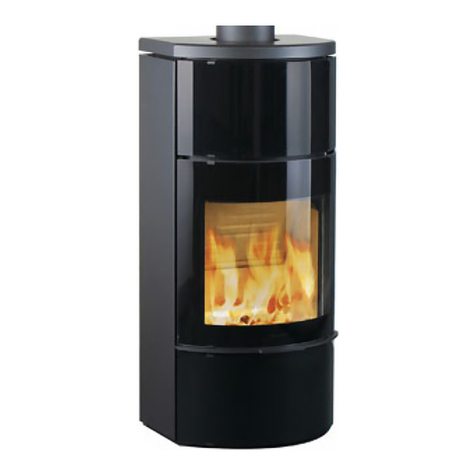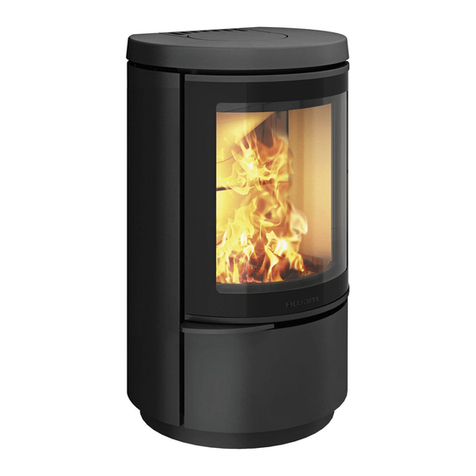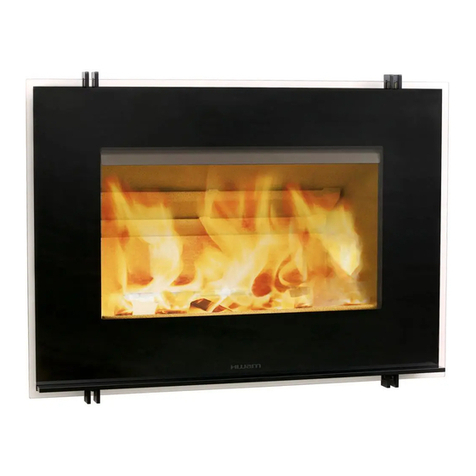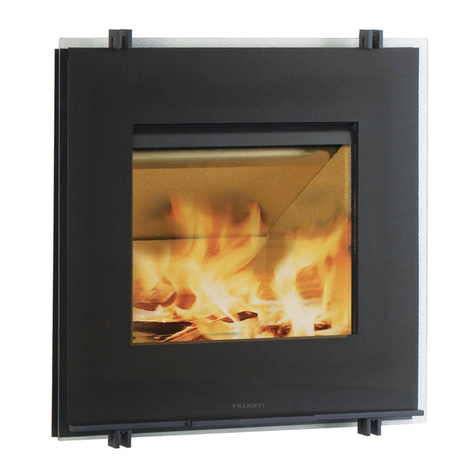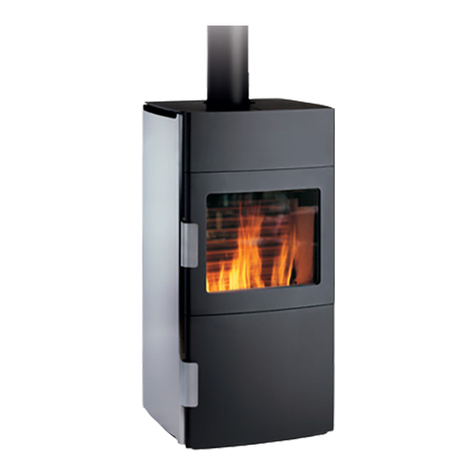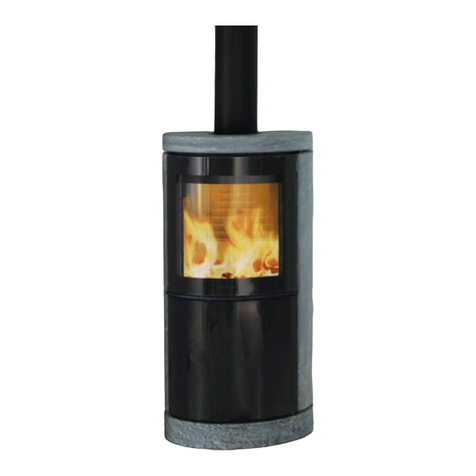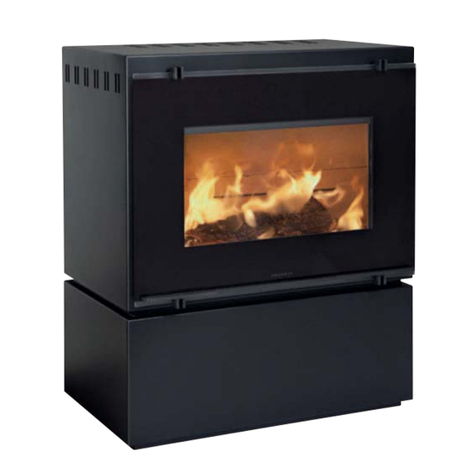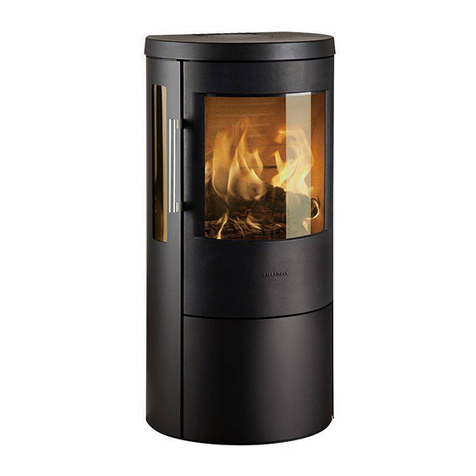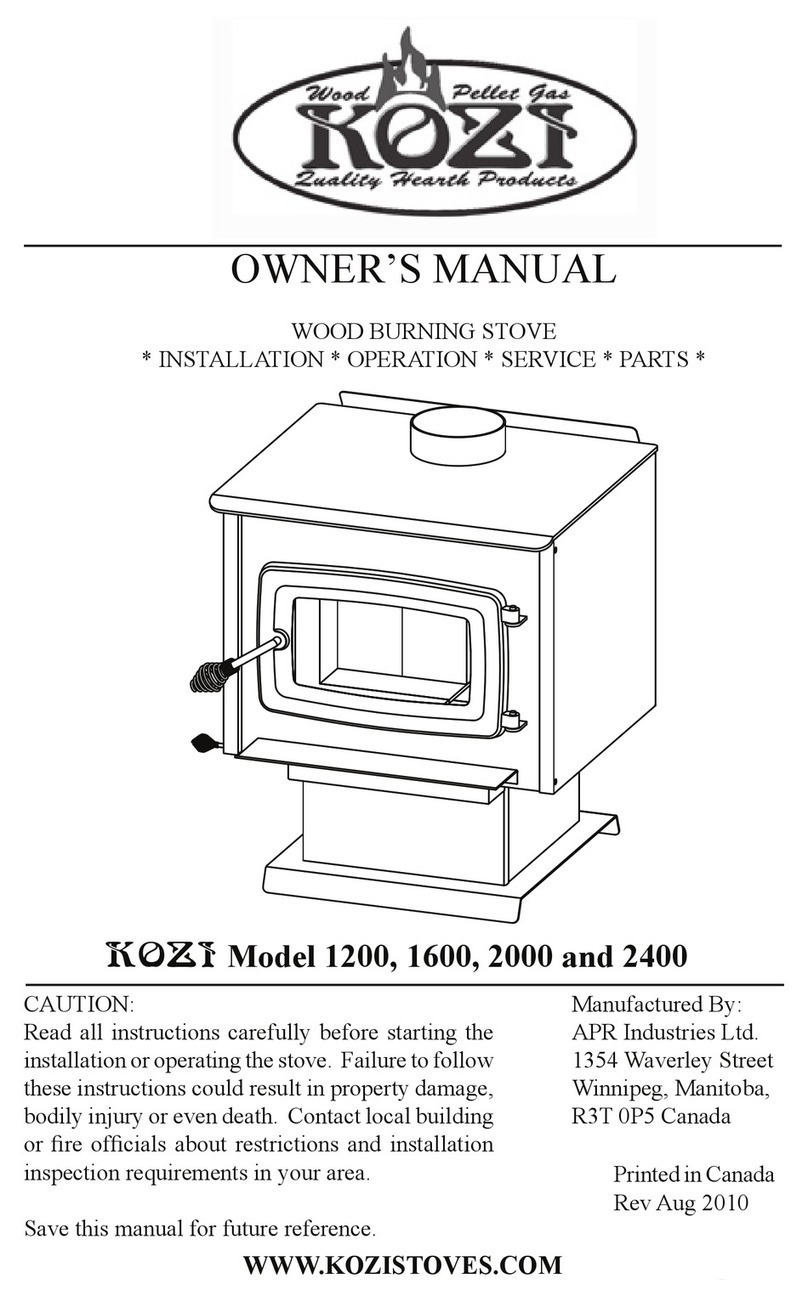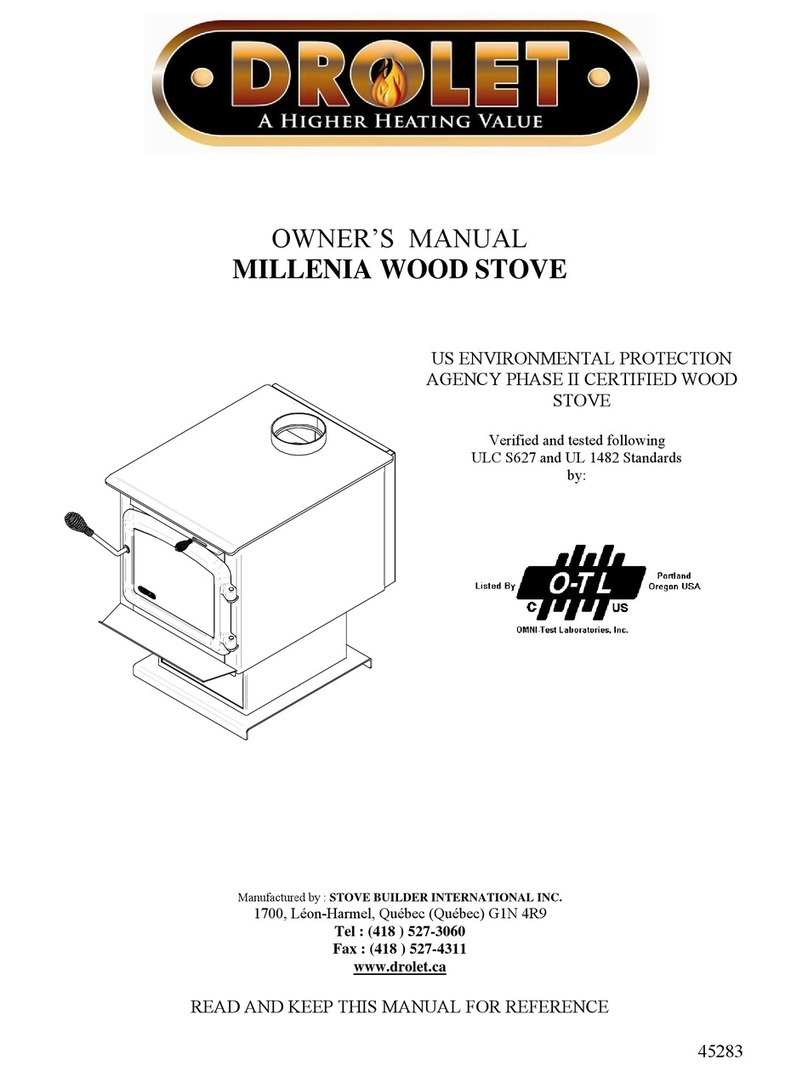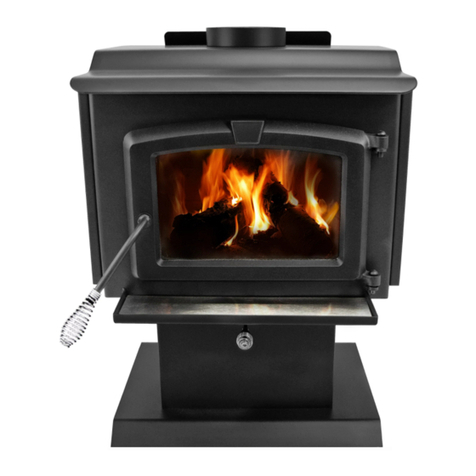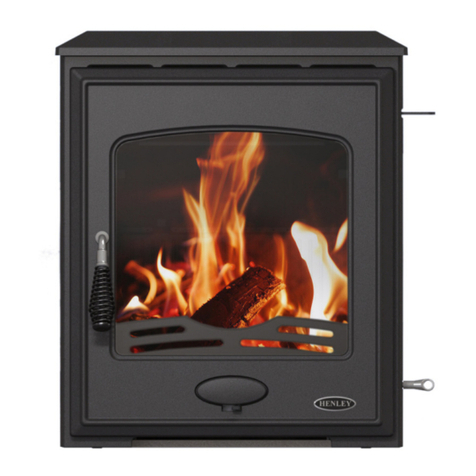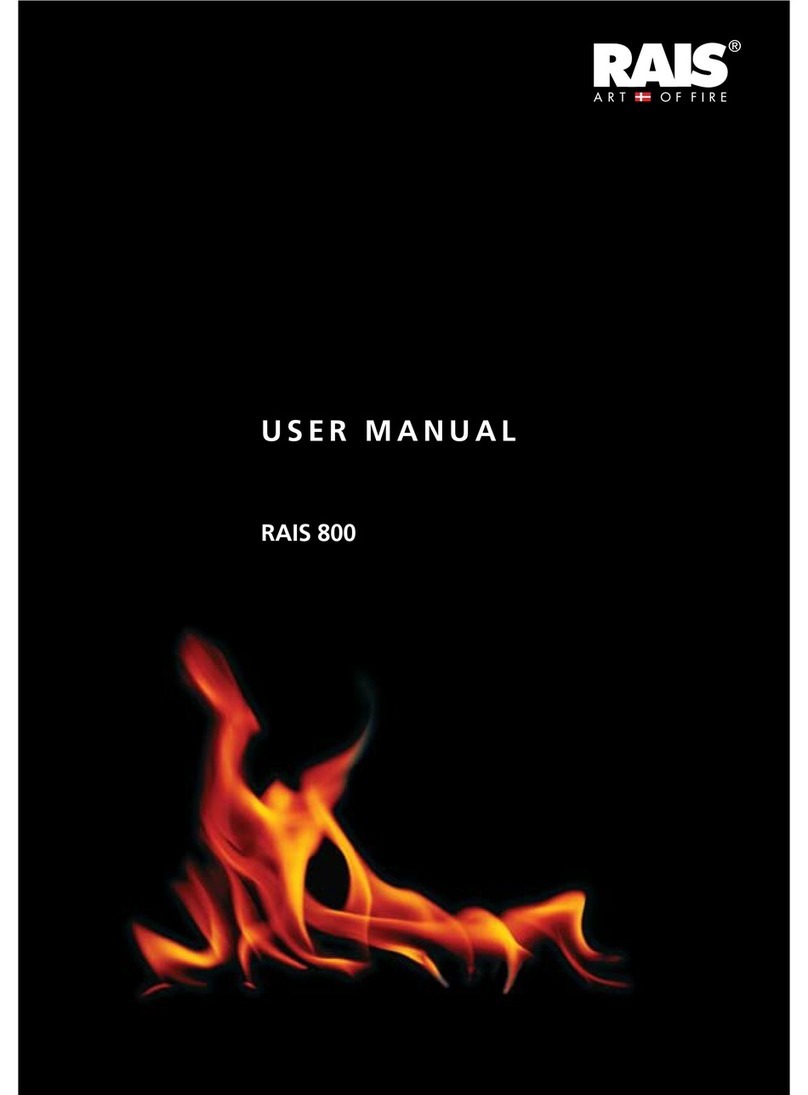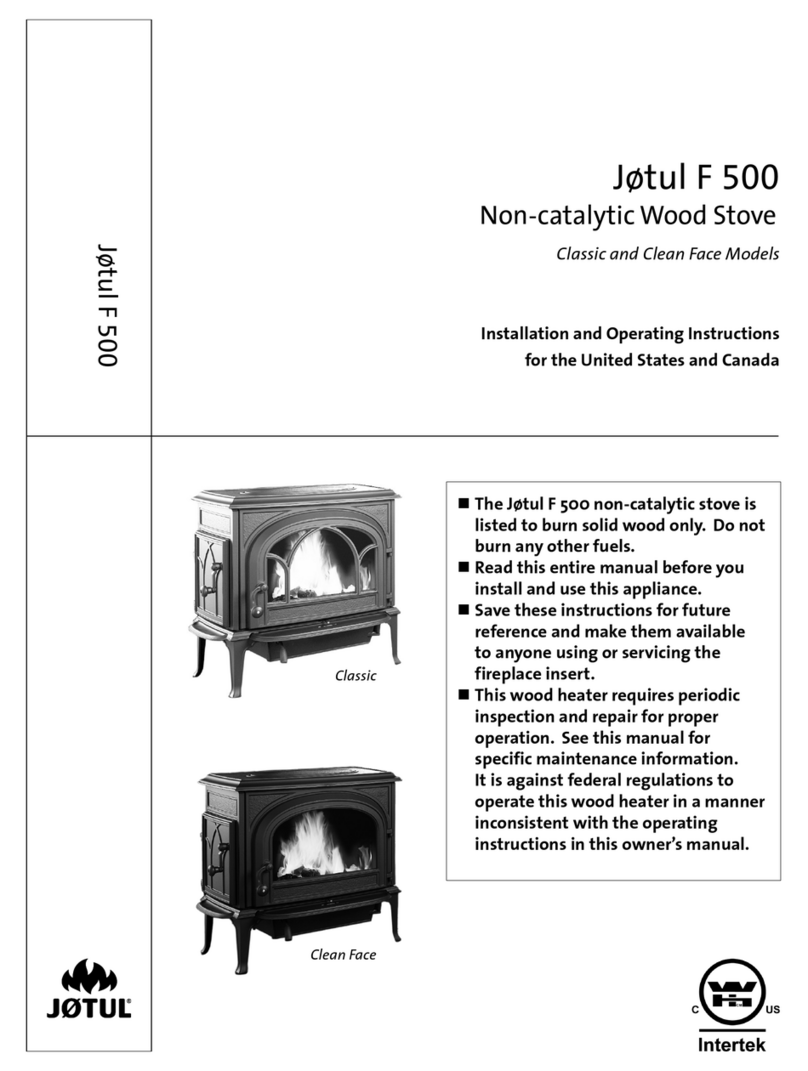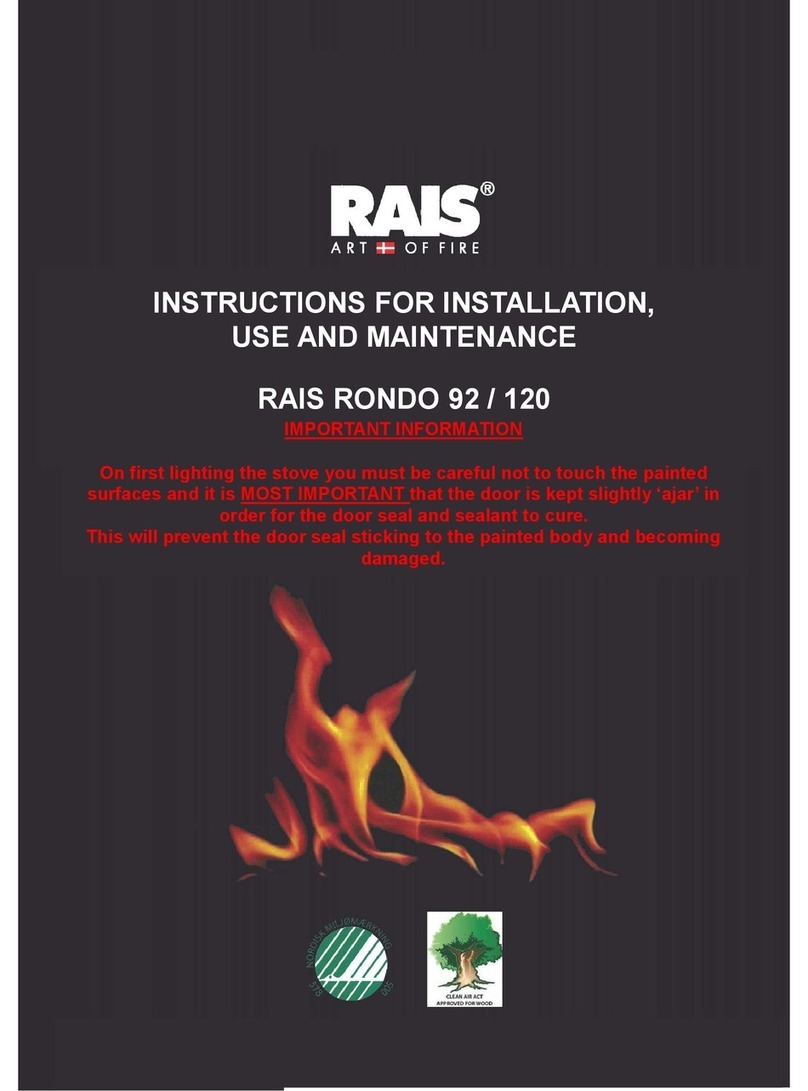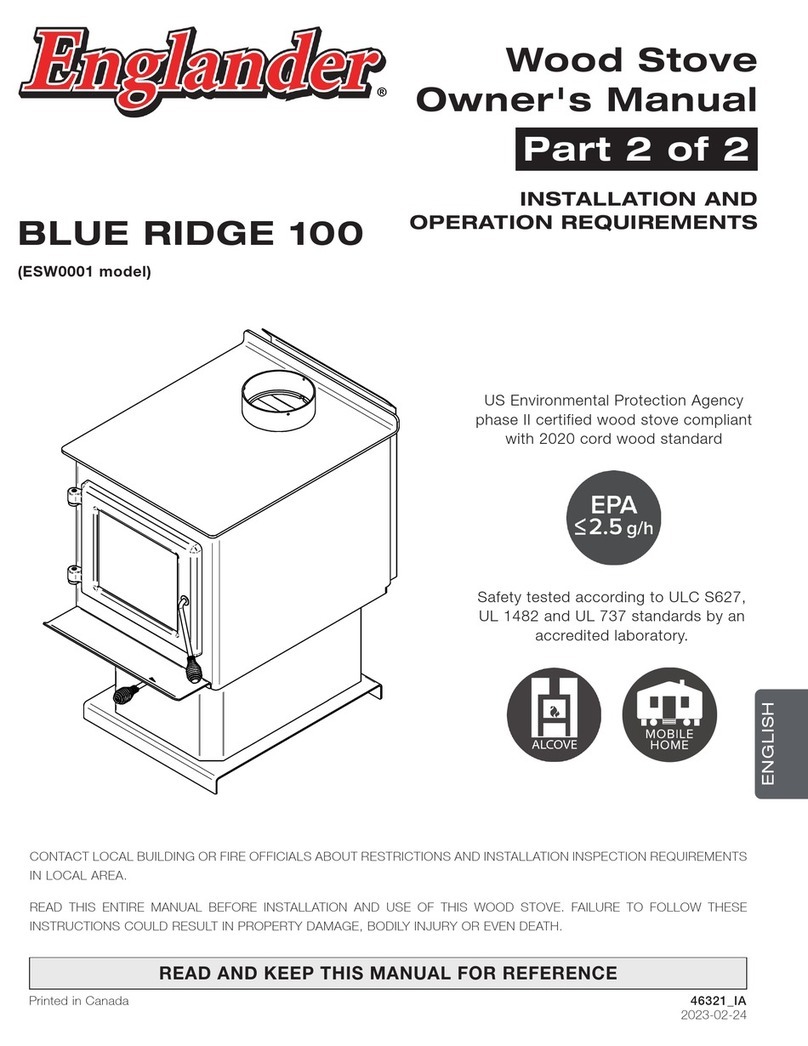
Page 6 of 12 pages
Firing manUal – Wood
Your first heating session
When you light up for the first time, you must do it carefully as all materials must be introduced to the heat gradually.The lacquer will be fully
hardened after the insert has been light up for the first time.The door must be opened carefully; otherwise there is a risk that the seals will stick
to the lacquer. In addition the lacquer may initially give off an unpleasant odour, so make sure that the room is well ventilated.
Approved fuel types
The insert is EU approved for firing with wood exclusively. It is recommended to use dried chopped wood with a water content of 12-18%. Stoking
a fire with wet wood results in soot, environmental problems, and a less efficient fuel economy.
Recommended wood types
All types of wood, for instance birch, beech, oak, elm, ash, conifers, and fruit trees can be used as fuel in your insert.The great difference is not in the
fuel value, but in the weight of the wood types per cubic metre. Beech weighs more per m3of wood than common spruce, for instance.This is why
more common spruce is required, in terms of volume,to obtain an amount of heat similar to that of beech. Heavy types of wood such as ash, beech,oak
and elm are generally not that easy to light up. In addition, they burn more slowly and give off more embers. Light types of wood such as birch, maple,
spruce and pine are more easy to light up.They burn faster and give off fewer ambers.You may therefore take advantage of the light types of wood for
lighting and use the heavier types of wood to ensure a longer burning time.
Banned fuel types
It is not allowed to stoke a fire with the following:
• Printed matter
• Plywood, plastic
• Rubber
• Fluid fuels
• Rubbish such as milk cartons, lacquered wood or impregnated wood.
• Fossil fuels
The reason that you should not apply any of the above is that during combustion they develop substances that are health hazardous and harmful
to the environment.These substances could also damage your insert and chimney, rendering the product warranty void.
Storage of wood
A moisture content of 12-18% is achieved by storing recently felled wood outdoors under a lean-to for at least one year, preferably 2 years.
Wood stored indoors has a tendency to become too dry and combust too quickly. However, it might be advantageous to store fuel for lighting
a fire indoors for a few days prior to use.
We recommend that you buy a moisture meter to continuously check that the wood has the correct moisture content before it is used for firing.
Split the wood and measure the moisture content of the split surfaces.
Recommended dimensions
The dimensions of the fuel are important to good combustion.The dimensions should be as follows:
Fuel type Length in cm Diameter in cm
Wood for kindling a fire (finely chopped) 20-40 3-5
Chopped wood 20-40 7-9
Lighting up
A successful combustion process requires that the wood is lit in the right way.A cold stove and a cold chimney challenge the combustion process.
Be careful to make a good lighting with suitably dry wood, using kindling and lighting the fire in the top layers of kindling. It is important to achieve
a high flue gas temperature quickly.When the door of the stove is opened HWAM®SmartControlTM is activated. If lighting up does not occur
within 15 minutes, the system will automatically go back to standby and the dampers will be closed.
Put split kindling, corresponding to two to three pieces of wood (about 2-2.5 kg), into the combustion chamber.The firewood cannot be stacked
higher than as indicated on the rear insulation plate (see illustration). Place 2-4 fire-lighters in between the top layers of kindling. Light up the
fire-lighters and close the stove door. Select the desired room temperature level.
IIf the smoke temperature does not reach a high enough level after lightning or stoking, the app IHS Smart ControlTM and the wireless room
temperature sensor emit a restoking alarm, even if there is still unburned wood and flames in the combustion chamber.The restoking alarm is
emitted to make you aware that the fire needs more energy. Restoking with small pieces of kindling wood can often provide a more rapid and
sufficient temperature rise.
Indication for max height of stacking wood


